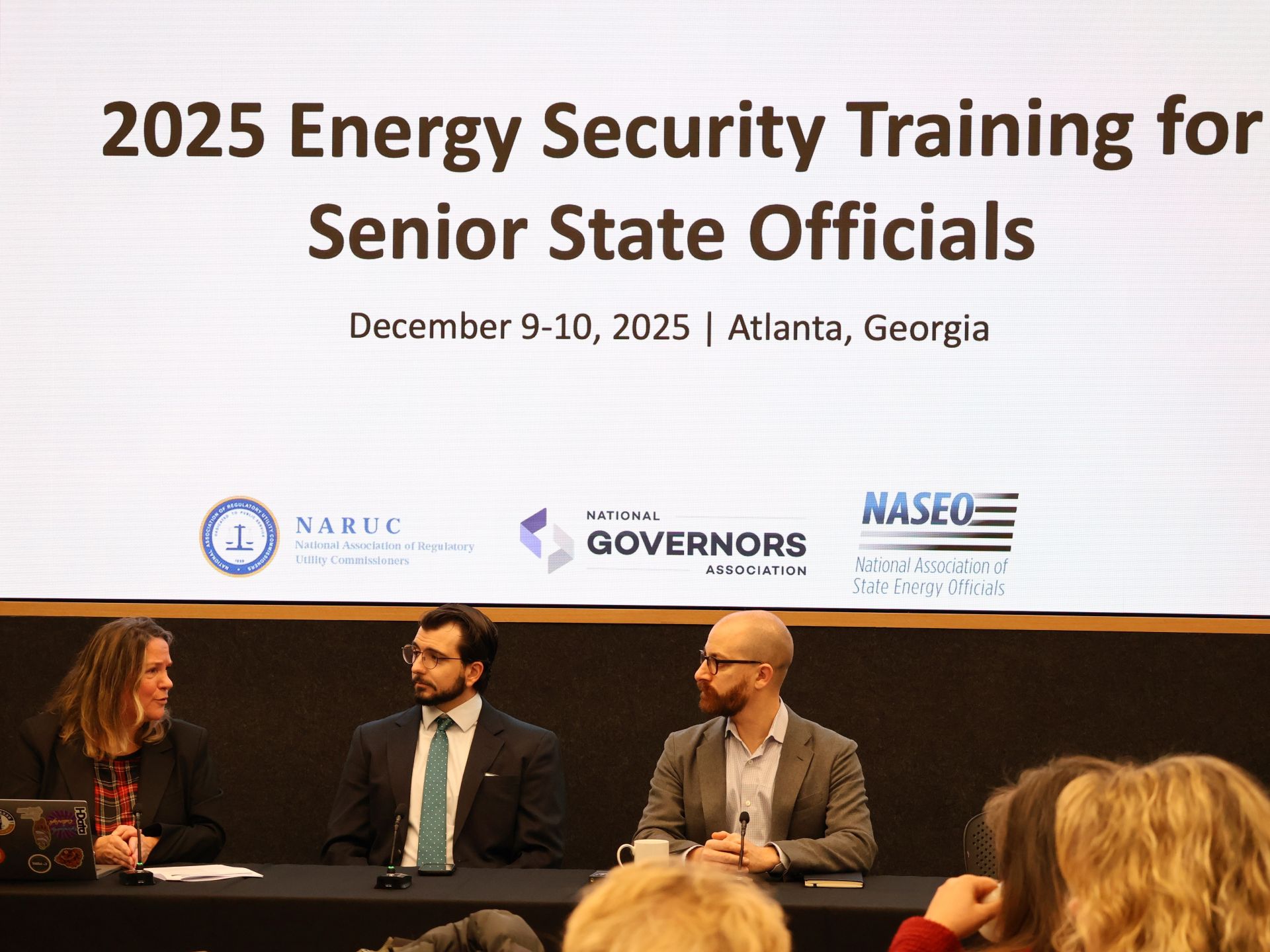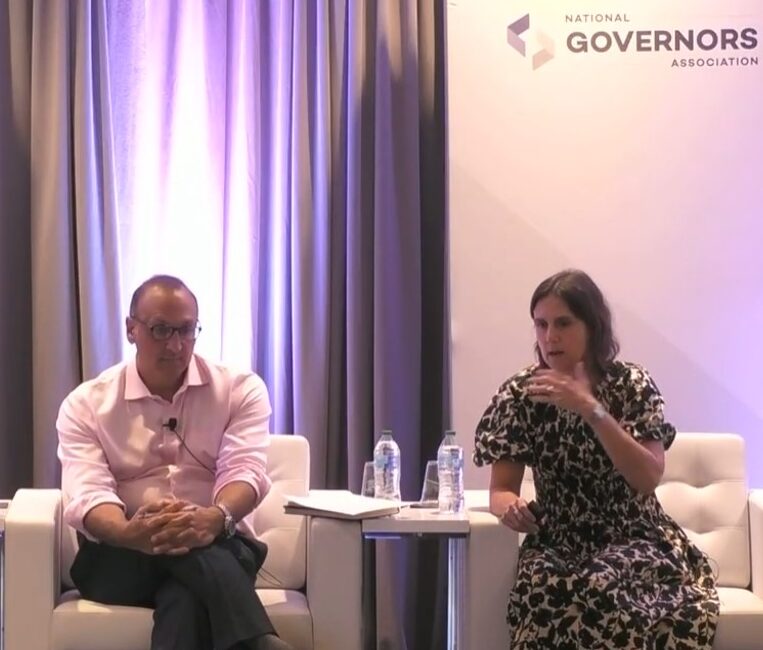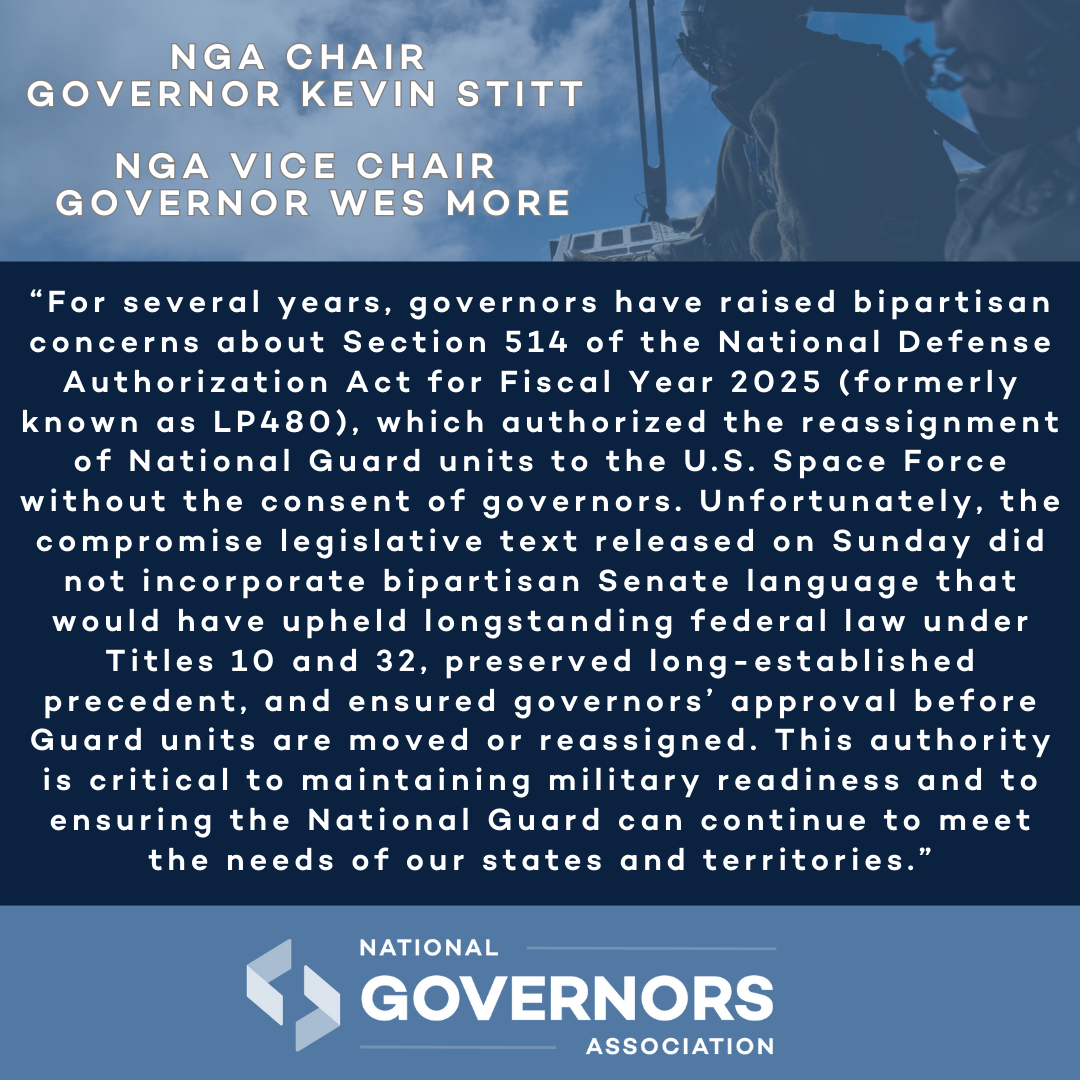This policy brief highlights several state case studies of effective funding and financing mechanisms for energy projects, including the braiding of private, state, and federal funding or financing sources to maximize investment and strategies for Governors to accelerate project delivery to meet their energy goals.
(Download)
Introduction
Governors can effectively advance their energy policy goals — such as system modernization, reliability, cost reductions or addressing resource adequacy — by leveraging innovative state funding and financing mechanisms alongside federal programs and funding opportunities and private-sector investment. By creating tailored financing mechanisms that reduce barriers for investments, establishing state-level green banks and state energy financing institutions (SEFIs), and incentivizing private-sector investment, Governors can expertly leverage private and household investments to address the energy needs of their states and territories. While often used together, the terms “funding” and “financing” have distinct meanings:
- Funding concerns the ultimate source of revenue used to support a project over time. This can include revenue derived through federal grants, state taxation, user charges such as utility rates, and so forth.
- Financing refers to agreements put in place to accommodate a timing mismatch between upfront costs and longer-term revenue sources. Financing methods include bonds, federal loans, state revolving loans, tax credits, private financing as part of public-private-partnerships or other arrangements. Funding and financing mechanisms can be “stacked” to provide the capital for large-scale infrastructure projects and invest in new technologies.
This policy brief will highlight several state case studies of effective funding and financing mechanisms for energy projects, including the braiding of private, state, and federal funding or financing sources to maximize investment and strategies for Governors to accelerate project delivery to meet their energy goals.
Case Studies of Gubernatorial Leadership
Early Cost Recovery in Advanced Energy Generation Projects: Virginia’s Innovative Approach to Developing Advanced Nuclear Generation
Virginia has seen significant growth of data centers and large industrial manufacturing within the state, which are contributing to rising electricity demand. Virginia Governor Glenn Youngkin has championed the commonwealth’s existing energy generation and has also advanced the development of new generation, including advanced nuclear. In 2022, Virginia published a State Energy Plan which advances an all-of-the-above approach to energy. To continue to grow Virginia’s economy, keep energy affordable and reliable, and meet the demand needs of the future, Virginia has taken an innovative approach to funding and financing energy generation projects.
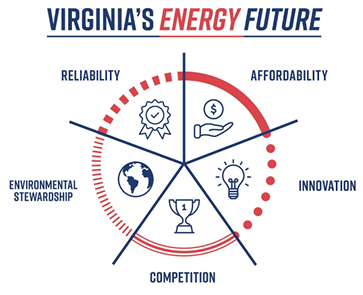
Advanced nuclear generation projects like small modular rectors (SMRs) have shown promise for reliable, clean energy generation at a lower cost for development than traditional nuclear generation facilities. In Virginia’s 2022 State Energy Plan, Governor Youngkin set a goal for Virginia to host the nation’s first commercial SMR within the next decade. Currently, the SMR industry is still in its infancy and faces cost barriers for siting, permitting, construction and deployment. To address these challenges, in 2024, Governor Youngkin played a key role in crafting and supporting legislation that allows utilities to petition for SMRs. The legislation also allows SMR developers in Virginia to seek regulatory approval for cost recovery on “evaluation, design, engineering, federal approval and licensing, environmental analysis and permitting, early site permitting, equipment procurement, and an authorized rate of return” on SMR projects. Subject to regulatory approval, this would allow developers to recover development-related costs for SMRs, reducing barriers of entry into the emerging energy sector. Traditional cost recovery occurs over the life cycle of the facility and typically begins upon completion of a project.
SMR development in Virginia has been spurred by the enactment of this policy. Following Governor Youngkin’s signing of this legislation, Dominion Energy Virginia (DEV) and Appalachian Power Company (APCo) have announced plans to develop SMRs in Virginia. Dominion Energy has also announced a partnership with Amazon to utilize SMRs to power data centers located in Virginia. located in Virginia.
In addition to encouraging the development of new power generation, this approach seeks to grow Virginia’s energy sector and create jobs. The Governor’s office worked with the legislature as the legislation developed to ensure that ratepayers will be protected under this new process. For example, APCo would be limited to a total of $125 million in overall cost recovery and cost recovery for Dominion Energy Virginia is unable to exceed a $1.40 individual increase of ratepayer monthly bills, subject to regulatory approval.
State Matching Funds to Leverage Federal Opportunities: Massachusetts Federal Funds and Infrastructure Office (FFIO)
When Massachusetts Governor Maura Healey took office, she made a commitment to take a systematic approach to pursuing and leveraging federal funds to maximize infrastructure investments in Massachusetts. This effort was executed through two actions. First, Governor Healey issued an Executive Order establishing a new state entity—the Federal Funds and Infrastructure Office (FFIO)—that would spearhead a whole-of-government approach to seeking federal opportunities. The FFIO is situated within the Executive Office for Administration and Finance and reports directly to the Governor. In the systematic pursuit of federal funds, the FFIO facilitates an interagency taskforce composed of state agency leads and other key stakeholders. In addition, the FFIO maintains a clearing house of federal funds, which tracks and consolidates information on upcoming grant opportunities for state, quasi-state, municipal and tribal entities within Massachusetts.
Secondly, in 2024, Governor Healey filed legislation that was subsequently signed into law that established a plan to allow the FFIO to utilize state funds and leverage federal infrastructure opportunities, including but not limited to those created in the Infrastructure Investment and Jobs Act (IIJA), the Inflation Reduction Act (IRA), and the Creating Helpful Incentives to Produce Semiconductors (CHIPs) and Science Act. The FFIO will utilize interest from the Commonwealth Stabilization fund to create a matching pool of $750 million to pursue federal grant funding; allocate $12 million for technical assistance for local, tribal, and nongovernmental entities as they pursue federal funding or financing; and $50 million for state grant and loan programs. The Commonwealth Stabilization Fund, the state’s rainy day fund, has grown to approximately $9 billion, and the FFIO will not utilize any of the principal fund value. In years where the Commonwealth Stabilization Fund grows and interest is capitalized, those revenues are allocated for use by FFIO to support the outlined efforts in pursuit of federal funds as an alternative to state bonding.
This approach combines several best practices. Governor Healey directed the FFIO to serve as the lead agency for seeking federal opportunities, coordinating a whole-of-government strategy. In addition, the FFIO takes an innovative approach to capitalizing the fund for federal grant matching through interest from Massachusetts’ rainy-day fund. By providing the match funds for grant-seekers within the state, the FFIO reduces barriers for applicants across the state to seek federal funding. Technical assistance for local and tribal entities, including grant writing, elective pay and tax credit filing assistance, and program implementation support, will allow for capacity building across the commonwealth, municipalities, and nongovernmental sector. This grows the capacity for under-resourced potential applicants to seek federal funds and bring more investment to Massachusetts.

State Energy Financing Institutions (SEFIs) and Green Banks: Virginia’s Clean Energy Innovation Bank
State Green Banks and State Energy Financing Institutions (SEFIs) are entities that leverage public funds to facilitate or incentivize private capital investment in energy projects. In 2023, NGA published an overview of Green Banks for Governors, including actions Governors can take to establish a state green bank and common Green Bank financing offerings.
The Infrastructure Investment and Jobs Act (IIJA), passed in 2021, expanded the lending capacity of the U.S. Department of Energy Loan Programs Office (DOE LPO) to include $62 billion for Title 17 loans, which allow for low-cost debt financing for large energy projects (greater than $100 million) with financial support from a SEFI. SEFIs are defined by the U.S. Department of Energy as a state entity that can lend or invest in energy projects using state funds. According to DOE LPO, SEFIs can support energy projects by either providing grant funding or loan financing to an LPO applicant or by bundling smaller projects into a capital pool to apply directly to DOE LPO for financing. In both cases, the SEFI contribution is part of the capital stack, combining with LPO financing and private capital, for example. Many state entities have received SEFI designation. SEFIs can be state green banks but also can be other state entities with financing authority, such as economic development authorities, housing agencies, state energy offices or other state financing authorities.
The Virginia 2022 State Energy Plan establishes goals to grow the commonwealth’s economy and energy sector. Driven largely by the growth of data centers and industrial manufacturing sites across the commonwealth, the Virginia Energy Office projects that energy demand will increase by 100% by 2035. Leveraging federal opportunities like the DOE LPO financing and mobilizing public and private capital investment can grow the energy sector, create energy jobs, and meet the energy needs of growing technology and industrial sectors within the state. With this goal in mind, in 2024, Governor Youngkin launched the Virginia Clean Energy Innovation Bank (VCEIB) within the Virginia State Energy Office. VCEIB is a green bank that is seeking SEFI designation in order to leverage federal opportunities alongside private investment to address financing gaps and accelerate project delivery for clean power generation and energy infrastructure projects across Virginia.
Seeded with $10 million through the 2024 state budget, VCEIB will offer loans and credit enhancements and is exploring financing mechanisms like private co-investment, securitization and aggregation. The VCEIB will also manage implementation of several grant programs, including the U.S. DOE Grid Resilience Formula Grant (40101D), the U.S. DOE Grid Resilience Investment Program (GRIP) and U.S. Environmental Protection Agency (EPA) Solar-for-all program.
Since its inception, VCEIB has announced several funding opportunities in innovative energy projects in Southwest Virginia. A funding announcement was released in December 2024 for grants to spur investment in blue and green hydrogen production and a feasibility study of carbon capture and storage[1]. In addition, in December 2024 Governor Youngkin announced a large-scale investment by the Commonwealth Fusion Systems, the largest private fusion company, to build the world’s first grid-scale commercial fusion power plant. The Virginia Department of Energy partnered with Virginia Economic Development Partnership, Chesterfield County, and Dominion Energy to secure this project, and the VCEIB will provide a $1 million grant for initial siting costs to advance this project, known as ARC, at the James River Industrial Center in Chesterfield County, Virginia, on a site owned by Dominion Energy. ARC intends to utilize fusion technology to generate 400 megawatts of electricity. These projects advance Virginia’s all-of-the-above energy strategy and take key steps to advance energy generation projects to meet growing electricity needs in the commonwealth.
Stacking Multiple Sources of Capital: Combining State Funding and Federal Incentives: Pennsylvania’s Solar for Schools Program

Pennsylvania’s plentiful natural resources have given the state a long history as an energy leader. Pennsylvania Governor Josh Shapiro released a State Energy Strategy which outlines the Governor’s all-of-the-above approach to energy. Through the State Energy Strategy, Governor Shapiro seeks to expand Pennsylvania’s energy workforce, reduce ratepayer costs and invest billions in energy projects across Pennsylvania.
In an effort to facilitate these objectives, in July 2024, Governor Shapiro signed into law the Solar for Schools grant program. The program designated $25 million in state grant funding to the Department of Community and Economic Development (DCED) for solar installation projects on school property.
Under this program, DCED may issue grants that fund up to50% of the costs for solar and storage installation. Schools can apply to the DCED program to reduce energy costs and increase resilience through the deployment of solar panels. These projects may also qualify for elective pay federal tax credits, reducing the cost burden of installation for school districts, community colleges, technical schools and other education entities. The Inflation Reduction Act enables tax exempt entities, like school districts, to claim tax credits on projects like rooftop solar installation through elective pay. Through the Solar for Schools Grant Program and the deployment of solar on schools across Pennsylvania, school districts and community and technical colleges can reduce energy cost burdens and hedge the increasing cost of energy.
Additionally, the Pennsylvania Energy Development Authority (PEDA), an independent public financing authority and Pennsylvania’s state “green bank,” applied for $100 million in financing from the U.S. Department of Energy’s Loan Programs Office to establish a revolving loan program for solar projects on schools. Through this program, loans would be available to schools to fill their financing gaps and will include bridge financing for the value of the applicable tax credits available through the elective pay provision.
Strong Gubernatorial Leadership of State Funding and Financing Institutions: North Dakota Industrial Commission
The North Dakota Industrial Commission was established in 1911 to facilitate certain utility, industry and business projects established by the state. Since its inception, the Commission has grown to administer or operate numerous programs and authorities, including the Bank of North Dakota, Clean Sustainable Energy Authority, Oil and Gas Research Program, Lignite Research, Development and Marketing Program, Transmission Authority, and more. The Board of the Commission is composed of the Governor, Attorney General and Agriculture Commissioner of North Dakota, with the Governor serving as the Chairman. The portfolio of programs and authorities within the Industrial Commission has grown and evolved over the century that it has operated within North Dakota, but the Commission has always operated solely on funding from the 10% oil, gas, and coal extraction and production tax as established by the state legislature. This allows the energy industry within North Dakota to reinvest in itself, creating a sustainable and innovative energy sector and cementing North Dakota’s role as an energy leader.
Throughout more than a century of operation within North Dakota, the strong role of the Governor as Chairman of the Commission has allowed for many Governors of North Dakota to leverage the various programs and authorities of the Commission to advance their energy policy goals. Through appointments to leadership or boards of funding and financing institutions, Governors can encourage innovation in mechanisms and facilitate energy project delivery. For each grant or financing program, the Governor appoints Advisory Boards that review applications for funding or financing and makes recommendations to the Industrial Commission Board. Then, the Board makes final determinations as to which projects are funded or financed. The direct role of the Governor as Chairman of the Industrial Commission furthers the ability of the Governor to advance innovation in funding and financing and accomplish the Governor’s energy policy goals and priorities.
In 2021, former Governor Doug Burgum, then the Chairman of the North Dakota Industrial Commission, signed legislation that created the Clean Sustainable Energy Authority (CSEA) within the Commission. The CSEA was capitalized with $25 million to provide grants and loans to projects focused on low-emission technologies and affordable sustainable energy solutions, including clean manufacturing, carbon capture, mineral extraction, and developing alternatives to plastics, among other uses. This legislation also authorized a $250 million line of credit to the Bank of North Dakota, a state entity also within the Industrial Commission, for loans and financing for riskier projects within the state’s interest. In 2024, a new loan opportunity through the Clean Sustainable Energy Fund Fertilizer Development Loan Program was created through legislation. NextEra Resources Development was authorized $50 million in forgivable loan financing for the production of hydrogen through water electrolysis.
In 2023, the Industrial Commission approved $15 million in matching grants and $222.5 million in loan financing for energy projects through the Commission’s CSEA and Oil and Gas Research Program. Projects included grant funding for a carbon dioxide storage hub and advanced oil recovery as well as loan financing for a carbon capture system and oilfield water recycling facility. Both the CSEA and Oil and Gas Research Program are funded by state oil and gas production tax and state mineral royalty revenues.
North Dakota Governor Kelly Armstrong, the current Chairman of the Industrial Commission, recently penned an op-ed along with his fellow board members advocating for the expansion of electric transmission infrastructure to meet the state’s economic growth in energy, data processing and other sectors. The Industrial Commission is the state Transmission Authority.
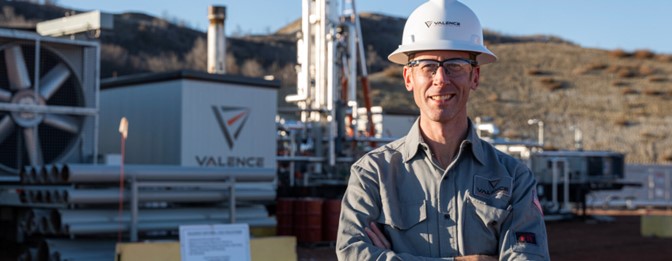
Relevant Resources
NGA Resources
- Green Banks: An Overview for Governors
- State Resource Center: Innovative Infrastructure Funding, Financing And Delivery
- State Governance, Planning, And Financing To Enhance Energy Resilience
External Resources
- S2 Strategies:
- Rocky Mountain Institute:
- Center for Development Finance Agencies
- Coalition for Green Capital
This paper was prepared by Fiona Forrester, Policy Analyst for Energy, National Governors Association, with support from Dan Lauf, Program Director for Energy, National Governors Association. The authors of this paper would like to thank the following state policy advisors who were interviewed for this paper and/or provided valuable insights for the highlighted case studies:
- Abbey Cadden, Infrastructure Coordinator, Office of Pennsylvania Governor Josh Shapiro, Critical Investments
- Glenn Davis, Director, Virginia Department of Energy
- Quentin Palfrey, Director, Massachusetts Office of Federal Funds and Infrastructure
- Reice Haase, Director, North Dakota Department of Water Resources (former Deputy Executive Director, North Dakota Industrial Commission)
This material is based upon work supported by the Department of Energy, Office of Electricity, under Award Number DE-OE0000927.
This report was prepared as an account of work sponsored by an agency of the United States Government. Neither the United States Government nor any agency thereof, nor any of their employees, makes any warranty, express or implied, or assumes any legal liability or responsibility for the accuracy, completeness, or usefulness of any information, apparatus, product, or process disclosed, or represents that its use would not infringe privately owned rights. Reference herein to any specific commercial product, process, or service by trade name, trademark, manufacturer, or otherwise does not necessarily constitute or imply its endorsement, recommendation, or favoring by the United States Government or any agency thereof. The views and opinions of authors expressed herein do not necessarily state or reflect those of the United States Government or any agency thereof.



